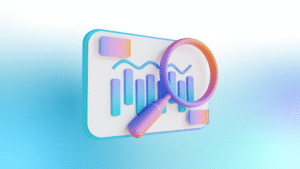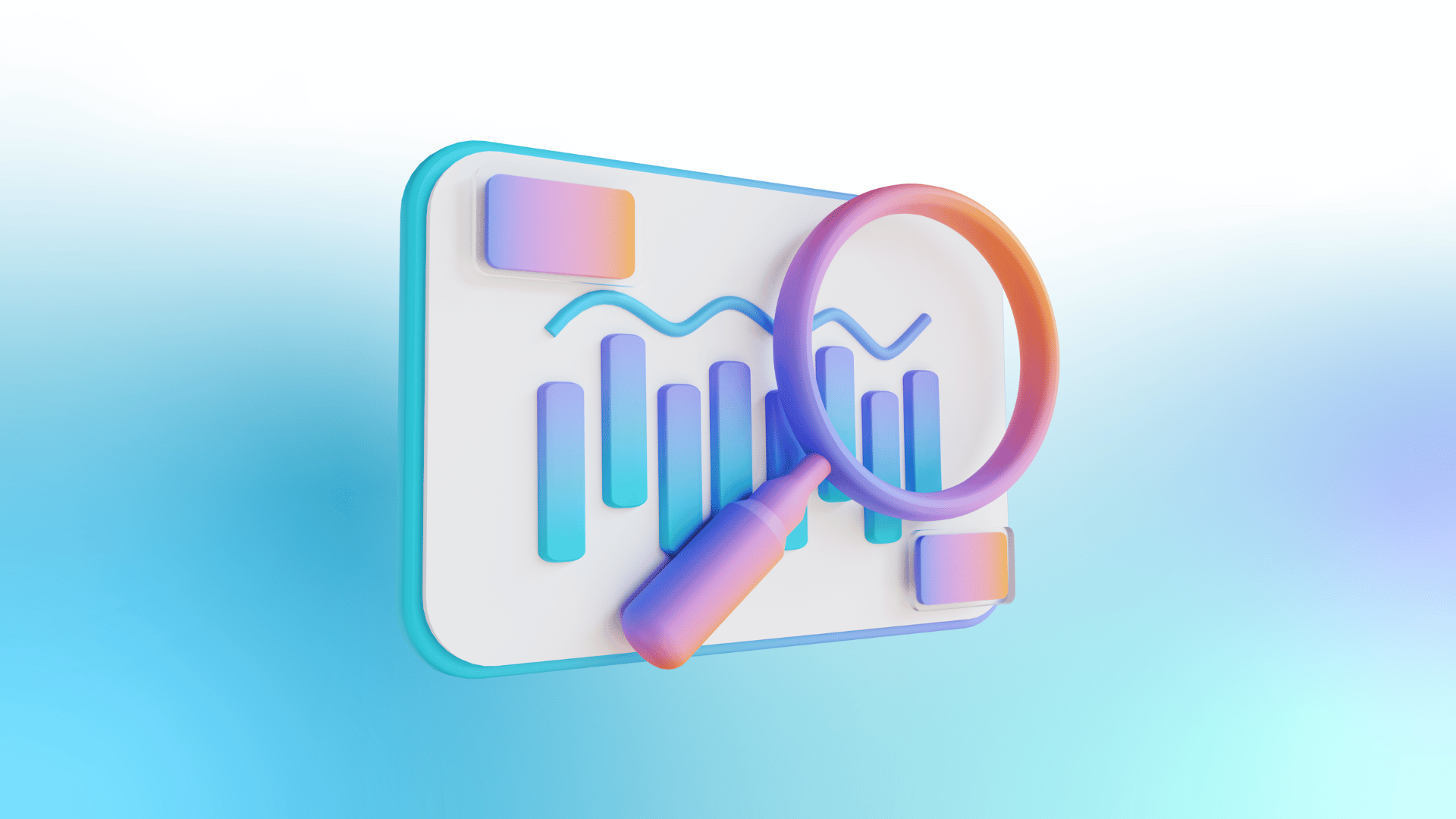PPC Competitor Analysis Made Simple: Expert Tools & Proven Strategies
Businesses earn an average of £2 for every £1 spent on Google Ads. This sounds impressive, but more than 50% of marketers still find PPC competitor analysis challenging in their paid advertising strategies.
Your competitors’ paid search tactics go beyond tracking their ads and keywords. The process involves understanding their complete advertising approach. Their bidding strategies and landing pages can help you optimise your campaigns for better performance.
We created this complete guide to PPC competitor analysis to help you succeed. You’ll discover proven strategies and essential tools that will help you understand your competition. These insights will help you spot market gaps and make smart decisions about your advertising resources.
Want to turn your PPC analysis from a challenge into a competitive advantage? Let’s tuck in and get started.
Understanding PPC Competitor Analysis Fundamentals
PPC competitor analysis reveals your competitors’ pay-per-click strategies and gives you a systematic way to assess and compare search engine marketing approaches.
What Makes an Effective Competitor Analysis Strategy
We focused on three core components to create an effective PPC competitor analysis strategy: ad content, keyword strategy, and budget allocation. This systematic process helps you spot where competitors excel and where they fall short, so you can find opportunities to stand out and grow.
Your competitors’ budgeting strategies can help you make better investment decisions. You should also look at their landing page design, layout, and user experience to maintain consistent messaging and visuals.
Key Metrics to Track in Paid Search Competitors
These metrics matter most when you track paid search competitors:
- Impression Share: Your ad’s appearance percentage compared to total potential impressions shows better visibility with higher shares
- Click Share: The percentage of clicks you get versus total eligible clicks measures how well you engage users
- Top Impression Rate: Shows how often your ads appear above organic search listings
- Position Above Rate: Tells you how often your ad shows up above competitor ads
PPC campaigns convert at 2.35% on average, while Google Ads achieve 3.75%. On top of that, Google Ads’ click-through rates typically range between 4% and 6%.
Common Pitfalls to Avoid
Your PPC competitor analysis needs to dodge several common mistakes. Looking at just one metric or missing seasonal patterns can lead to incomplete insights. You might also limit your success by ignoring ad copy and creative elements or not using insights to improve campaigns.
There’s another reason why context matters in your analysis. Market trends, holidays, or changes in how people buy things should shape your conclusions. The data you collect becomes useless if you don’t turn it into real improvements.
Essential PPC Competitor Analysis Tools
The right tools create the foundation for effective PPC competitor analysis. A good understanding of available options helps create a reliable analysis framework.
Free vs Paid Analysis Tools Comparison
Social media PPC competitor intelligence benefits from powerful free options in official ad libraries. Meta’s Ad Library, TikTok’s Ad Centre, and Google Ads Transparency Centre give detailed insights into competitors’ active campaigns at no cost. Marketers can study their competitors’ visual designs and promotional strategies through these platforms.
SEMrush and SpyFu lead the pack of paid tools with their complete features. SpyFu shows competitors’ historical ad data, keyword performance, and budget allocation patterns. SEMrush excels at tracking competitors’ ad spending patterns and spotting market gaps.
| Feature Type | Free Tools | Paid Tools |
|---|---|---|
| Cost | No investment | £39-£99/month |
| Data Access | Current campaigns | Historical + Current |
| Analysis Depth | Simple metrics | Advanced insights |
| Update Frequency | Up-to-the-minute | Daily/Weekly |
Setting Up Automated Monitoring Systems
Automated monitoring excels at tracking competitor movements. Smart Monitor systems alert you about competitor bidding adjustments and market changes. These systems help identify:
- High-performing opportunities in the PPC landscape
- Changes across market from competitor movements
- Updates in competitor keyword strategies
Tool Integration Best Practises
Tool integration succeeds with a strategic approach. Multiple connected platforms boost analysis capabilities. To cite an instance, see how Google Analytics combined with specialised PPC tools provides deeper insights into campaign performance.
Your integration process works best with these guidelines:
- Start with core platforms (Google Ads, Meta Ads)
- Add specialist tools for deeper analysis
- Set up automated reporting systems
- Configure alert thresholds based on specific needs
EU-targeted campaigns benefit from additional data points due to transparency laws, including age, gender, and location information. Marketers should set up their tools to capture these extra insights where possible.
Analysing Competitor PPC Keywords
Learning about competitor keyword strategies will help you create successful PPC campaigns. A systematic analysis shows proven opportunities instead of guessing which keywords work best.
Identifying High-Value Target Keywords
Tools like SEMrush and Ahrefs give complete data about competitors’ PPC strategies. These platforms show which keywords consistently generate traffic and conversions for competitors.
High-value keywords typically fall into distinct categories:
- Brand terms: Direct company names and variations
- Product-specific terms: Detailed product descriptions
- Generic category terms: Broader industry phrases
- Third-party brand terms: Related product names
- Top-of-funnel terms: Research-focused queries
Analysing Keyword Bidding Patterns
Google Auction Insights data reveals strategic opportunities through competitor bidding patterns. You can see clear patterns in impression share and position rates at different times. Some advertisers maintain a steady presence while others focus their budgets during peak hours.
Automated monitoring tracks these patterns, but manual analysis is vital. The goal isn’t to copy competitor strategies but to find windows where less competition allows affordable bidding.
Discovering Keyword Gaps and Opportunities
A keyword gap analysis shows untapped opportunities in your PPC strategy. SEMrush’s Keyword Gap tool lets you compare up to five competitors’ keyword portfolios side by side. Marketers can spot keywords where:
- Competitors rank but you don’t
- You rank higher than competitors
- Competitors have no presence
- All competitors maintain rankings
Search term reports show blind spots in negative keyword implementation. Of course, these gaps often point to parts of the conversion funnel that need attention.
Advanced gap analysis looks at how organic and paid keyword performance work together. Terms where competitors invest heavily in both channels usually convert well and deserve attention. Focusing on niche search terms often brings better clicks and conversions.
The digital world changes constantly, so this process needs ongoing monitoring. Keyword strategies become outdated quickly as competitors adjust their approaches. Consumer behaviours and search patterns also evolve, making regular keyword portfolio updates necessary.
Evaluating Competitor Ad Strategies
PPC campaigns thrive on understanding and outperforming competitor ad strategies. A full picture of competitor advertisements gives an explanation about market positioning and techniques to involve customers.
Ad Copy Analysis Framework
We examined unique selling propositions (USPs) that competitors highlight in their messaging. This analysis includes headline variations, benefit statements, and calls-to-action that generate involvement.
The framework to analyse competitor ad copy has:
- Emotional triggers and urgency elements
- Ad extension usage patterns
- Promotional language styles
- Brand positioning approaches
Tools like SpyFu track changes in competitor ad copy over time and are a great way to get information about messaging strategies that competitors have tested and kept. Without doubt, this historical data helps identify successful advertising patterns within your market sector.
Landing Page Assessment Techniques
Landing page analysis centres on three core elements that affect conversion rates:
| Assessment Area | Key Elements to Review |
|---|---|
| Design Layout | Visual hierarchy, colour schemes, responsive design |
| Content Structure | Headlines, supporting text, social proof |
| Conversion Elements | CTA placement, form design, trust indicators |
Tools like GTmetrix or Google PageSpeed Insights measure loading speeds and user experience metrics. The arrangement between ad messaging and landing page content substantially affects quality scores and conversion rates.
Creative Testing Insights
Creative testing needs a systematic approach to measure ad effectiveness. A/B testing should target one element at a time – headlines, descriptions, or CTAs – to attribute performance changes accurately.
Tests should run 2-4 weeks or until reaching statistical significance. This approach ensures reliable data collection and removes random fluctuations in performance metrics.
The team should review:
- Click-through rates across different ad variations
- Conversion rates for each landing page version
- User engagement metrics with various creative elements
These insights help refine future campaigns and boost overall performance. In spite of that, responsive search ads have made traditional ad copy testing more complex, so advertisers must adapt their testing strategies.
Whatever the testing approach, the match between ad messaging and landing page content is vital. Different audience segments respond uniquely to various creative elements, which needs constant monitoring.
Testing thumbnails, video lengths, or CTA placements should focus on gathering practical insights that improve campaign performance. Successful creative testing guides better ad involvement and higher conversion rates across campaigns.
Creating an Action Plan
A structured plan helps turn competitor insights into winning PPC strategies. The right action plan makes competitor analysis findings lead to better PPC campaign results.
Prioritising Competitive Opportunities
PPC campaigns succeed when teams rank opportunities based on their potential effect and needed resources. Companies that spend 10-20% of their PPC budget on testing and optimisation see better ROI.
Key factors to think about when setting priorities:
- Market gaps found through competitor analysis
- Keywords that perform well with manageable competition
- Audience segments that need attention
- Seasonal trends and peak periods
Teams should track competitor activities every 30 to 60 days to spot changes and new trends in advertising [46, 47]. This helps maintain an edge over competition.
Resource Allocation Strategies
Smart budget distribution between campaign elements makes a big difference. This table shows recommended budget splits for key PPC activities:
| Activity | Budget Allocation | Purpose |
|---|---|---|
| Core Campaigns | 60-70% | Primary keyword targeting and main ad groups |
| Testing | 10-20% | A/B testing and optimisation efforts |
| Seasonal Campaigns | 15-20% | Peak period and promotional activities |
| Monitoring Tools | 5-10% | Competitor tracking and analysis platforms |
Modern PPC campaigns need constant fine-tuning across channels. Google Analytics works with specialised PPC platforms to give deeper performance insights.
Implementation Timeline Planning
Market conditions and competition should guide implementation timelines. Clear measures and tracking systems help monitor progress effectively.
The strategic framework looks like this:
- Initial Assessment (Week 1-2)
- Baseline performance metrics
- Competitor positioning analysis
- Resource availability evaluation
- Phased Implementation (Week 3-8)
- Tool integration and setup
- Campaign structure adjustments
- Bidding strategy modifications
- Optimisation Phase (Week 9-12)
- Performance monitoring
- Strategy refinement
- ROI assessment
Automated systems should track changes in competitor strategies to allow quick adjustments. This approach maintains competitive advantage while using resources wisely.
The timeline should flex with market changes and competitive shifts. Businesses in fast-changing industries might review monthly, while others can stick to quarterly assessments.
Measuring Analysis ROI
Measuring how PPC competitor analysis affects your business requires systematic evaluation. Companies that monitor their analysis ROI see better results in their advertising campaigns.
Setting Performance Standards
Clear standards are the foundations of effective ROI measurement. Google Ads campaigns typically achieve an average conversion rate of 3.75%, which provides a baseline for performance assessment. A strong benchmarking system covers:
| Metric Category | Key Performance Indicators |
|---|---|
| Engagement | Click-through rate, Quality score |
| Conversion | Cost per acquisition, Conversion rate |
| Financial | Return on ad spend, Cost per click |
| Competitive | Impression share, Position above rate |
Marketers should set up automated reporting systems to track these metrics consistently. Google Analytics combined with specialised PPC platforms provides complete performance tracking capabilities.
Tracking Competitive Gains
Measuring competitive gains needs both quantitative and qualitative assessment. The average return on ad spend (ROAS) ratio is 2:1, while successful campaigns often reach 4:1 or higher.
Your competitive gain tracking should focus on:
- Market share changes in targeted keywords
- Changes in impression share against competitors
- Better quality scores and ad positions
- Changes in conversion rates across campaigns
These metrics help identify where competitor analysis creates real benefits. Machine learning algorithms boost this process by predicting future performance from historical data.
Adjusting Strategy Based on Results
PPC campaigns need constant optimisation to succeed. Performance data should guide strategic adjustments in several key areas:
- Budget Allocation
- Pause bidding on high-volume but low-converting search terms
- Focus resources on niche keywords with better conversion rates
- Adjust spending based on temporal performance patterns
- Creative Optimisation
- Refine ad copy based on performance metrics
- Test different landing page elements
- Modify calls-to-action for better engagement
- Bidding Strategy
- Adjust bids based on competitor position analysis
- Optimise for high-performing time periods
- Balance cost per click with conversion value
Major changes in competitor behaviour might require immediate strategy adjustments. Automated monitoring systems help spot these changes so you can respond quickly to market dynamics.
While automated tools are valuable, human analysis remains vital to interpret results and make strategic decisions. Regular review cycles – monthly for ever-changing industries and quarterly for stable markets – help maintain competitive advantage.
Strategies that worked before might need adjustment as market conditions change. Automated systems provide useful data, but successful optimisation combines this information with market expertise and business goals.
Many businesses overlook testing different ad variations before making major strategy changes. A/B testing should run for 2-4 weeks to ensure statistical significance. This approach helps marketers make informed decisions about campaign modifications.
Detailed records of strategy adjustments and their effects help improve future optimisation efforts. These records should include:
- Changes made to campaigns
- Resulting performance shifts
- Competitor responses
- Market condition variations
Each optimisation cycle builds on previous lessons, creating a continuous improvement loop that makes campaigns work better over time.
Conclusion
PPC competitor analysis is a vital element that drives advertising success. Businesses earn an average of £2 for every £1 spent on Google Ads. Our detailed look at analysis tools, strategies, and implementation methods shows how proper competitor research shapes winning campaigns.
Successful marketers don’t see competitor analysis as a one-time task – they make it an ongoing process. Data reveals that businesses achieve better returns when they dedicate 10-20% of their budget to testing and optimisation. Regular monitoring and strategy adjustments help maintain a competitive edge.
Success in PPC comes from tracking competitors and taking decisive action based on informed insights. Automated tools make the process easier, yet human expertise plays a key role in data interpretation and strategic decisions.
Your PPC competitor analysis needs consistency, the right tools, and regular strategy updates. Companies following these principles while avoiding common mistakes set themselves up for long-term growth in paid advertising.
Keep your initial efforts small. Measure results and adjust strategies based on actual data. Each optimisation cycle will strengthen your PPC campaigns and lead to improved advertising returns.
Author
-

Managing Director of one of Australia's leading Digital Marketing Agencies... With over 7+ years of hands on experience in SEO, managing both national & international organisations SEO strategy and campaign distribution. Having won several international awards (Search Awards, Clutch, TechBehemoth etc.) for both paid media and search campaign success... He is a front runner in leading search and defining the playbook for the Australian market.
View all posts











